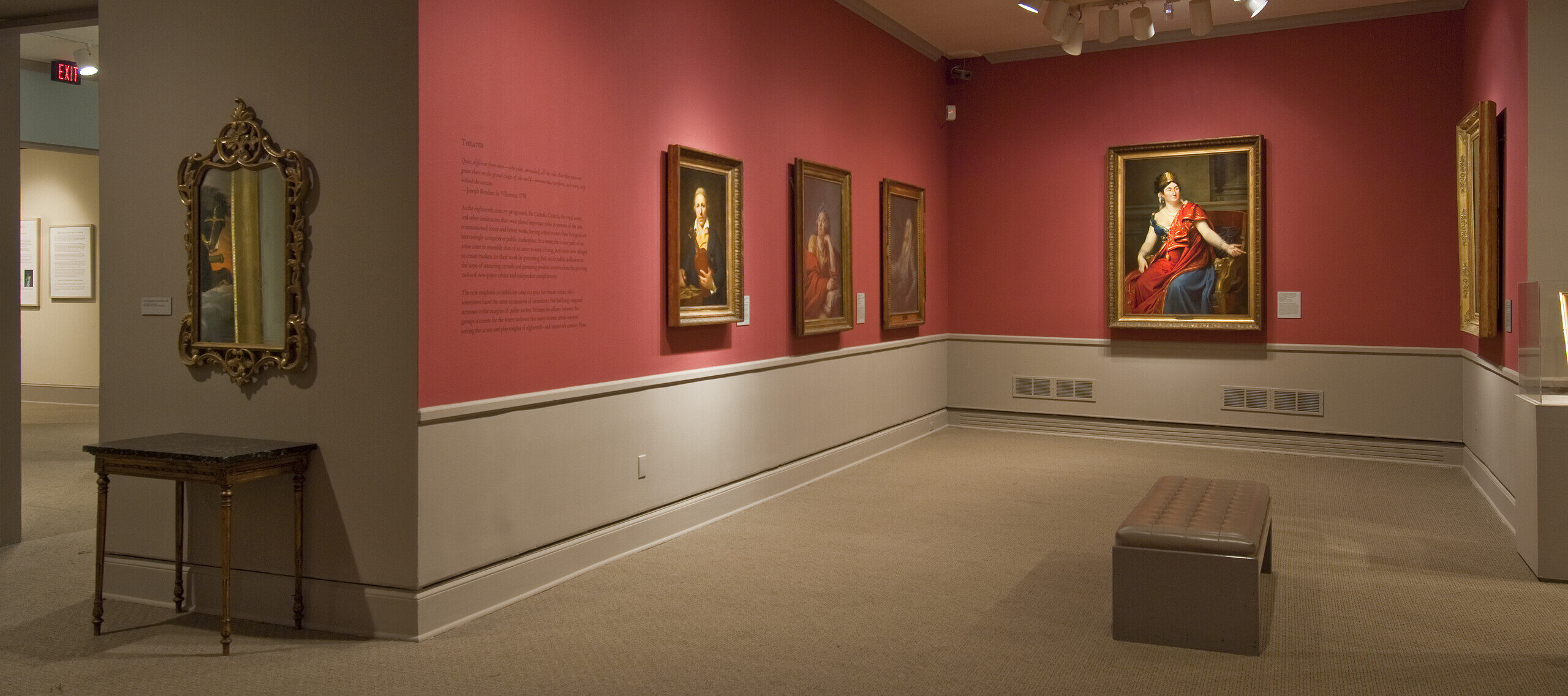In Royalists to Romantics: Women Artists from the Louvre, Versailles, and Other French National Collections, 77 works by 35 artists display the talents of French Revolution-era women artists. Their paintings are windows into their careers and the singular challenges of their time. The catalogue that NMWA has published to illustrate Royalists to Romantics includes essays as well as individual artist biographies that give insight into the lives of women artists working in France between 1750 and 1848. This excerpt explores the life of one the show’s featured artists, Madeleine Françoise Basseporte.

Although Madeleine Basseporte initially studied with a history painter, she became a botanical illustrator whose work stands at the intersection of art and science.¹ Her first teacher was the painter and engraver Paul-Ponce-Antoine Robert, known as Robert de Sery (1686–1733), who enjoyed the patronage of Cardinal de Rohan, the scion of an influential noble family of Breton origin. Through Robert, Basseporte was able to study the collections of old master paintings housed at Rohan’s hôtel in the Marais district of Paris.² Robert had close relationships with Basseporte and her widowed mother: he placed Basseporte at the head of a drawing school for female students, asked her to produce prints after many of his works, and entrusted both women to assist with the inventory and distribution of his possessions upon his death.

Tradition has it that Basseporte, who grew adept at the art of pastel portraiture, chose to pursue flower painting because it promised a steady income that would enable her to support her aging mother. After Robert’s death, Basseporte apprenticed herself to Claude Aubriet (1665–1742), whom she succeeded in 1741 as official painter to the Jardin du roi (the king’s botanical gardens in Paris). This post, which Basseporte held until 1780, obliged her to provide the crown with twelve paintings per year. Most of these are still held at the gardens, renamed the Jardin des plantes during the Revolution and today part of the Museum national d’histoire naturelle.
Several of Basseporte’s drawings from the collection of the Jardin des plantes are on view in this exhibition. Basseporte was also called upon to travel to the royal chateaus at Versailles, Compiegne, Fontainebleau, and Bellevue to record the collections of animals and plants that Louis xv and Madame de Pompadour assembled at these properties. In addition, she taught flower painting to the daughters of Louis xv, who maintained life-long interests in both art and botany. She may also have given lessons to other women, including the future académiciennes Marie Therese Vien and Anne Vallayer-Coster, both included in the current exhibition.
During her tenure at the Jardin du roi, Basseporte interacted with many scientific and intellectual luminaries of the era. The influential Swedish botanist Carolus Linnaeus met Basseporte in the 1730s when she was still studying with Aubriet. The French naturalist Georges-Louis Leclerc, comte de Buffon, kept up a decades-long correspondence with the artist. And the philosophe Jean-Jacques Rousseau reportedly exclaimed that “nature gives plants their existence” but “Mademoiselle Basseporte gives them their preservation.”³
Notes
1. The most thorough biography of Basseporte remains “Necrologe,” Revue universelle des arts 13 (1861), pp. 139–47. The present text also draws upon Emile Bellier de la Chavignerie, Dictionnaire général des artistes de l’école française depuis l’origine des arts du dessin jusqu’à nos jours: Architectes, peintres, sculpteurs, graveurs et lithographes (1882–85; rpr., Paris, 1997), vol. 1, p. 50, and Augustin Jal, Dictionnaire critique de biographie et d’histoire: Errata et supplément pour tous les dictionnaires historiques d’après des documents authentiques inédits (Paris, 1867), p. 124.
2. All information concerning Basseporte’s work with Robert de Sery is based on Henri Bourin, Paul-Ponce-Antoine Robert (de Séry) peintre du Cardinal de Rohan (1686–1733) (Paris, 1907).
3. “Necrologe,” p. 142. According to the author, Rousseau famously said “la nature donnait l’existence aux plantes, mais . . . mademoiselle [sic] Basseporte la leur conservait.”
